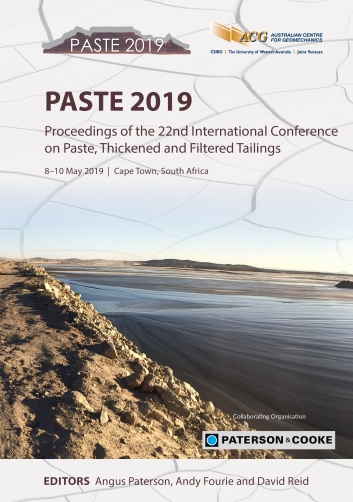Rehabilitation of the Hillendale Mine’s residue storage facility

|
Authors: Beukes, JA; Vlok, ML; Khosa, FE |
DOI https://doi.org/10.36487/ACG_rep/1910_35_Beukes
Cite As:
Beukes, JA, Vlok, ML & Khosa, FE 2019, 'Rehabilitation of the Hillendale Mine’s residue storage facility', in AJC Paterson, AB Fourie & D Reid (eds), Paste 2019: Proceedings of the 22nd International Conference on Paste, Thickened and Filtered Tailings, Australian Centre for Geomechanics, Perth, pp. 467-478, https://doi.org/10.36487/ACG_rep/1910_35_Beukes
Abstract:
The Tronox KZN Sands Hillendale Mine is located in Zululand – close to Richards Bay. Mining activities commenced in 2001 and the mine’s production came to an end in 2013. At Hillendale, dunes with a high fines content were mined to recover the valuable minerals of ilmenite Zircon and rutile. The fine fraction consisting mainly of fine clay minerals was managed by storage in a residue storage facility (RSF). Following the cessation of mining activities several actions have been implemented towards achieving mine closure. This paper will firstly give some basic background on the operation of the residue facility as part of the Hillendale Mine. Secondly the paper will focus on mine closure activities planned and implemented at the RSF. The learnings and experience gained from the Hillendale Mine will form the basis of future closure plans for RSFs operated as part of Tronox’s newly established mine at Fairbreeze.
Keywords: rehabilitation, residue storage facility, mine closure
References:
Republic of South Africa 2002, Mineral and Petroleum Resources Development Act No. 28 of 2002, Government Gazette, vol. 448, no. 23922, 10 October 2002, Republic of South Africa.
© Copyright 2025, Australian Centre for Geomechanics (ACG), The University of Western Australia. All rights reserved.
View copyright/legal information
Please direct any queries or error reports to repository-acg@uwa.edu.au
View copyright/legal information
Please direct any queries or error reports to repository-acg@uwa.edu.au


